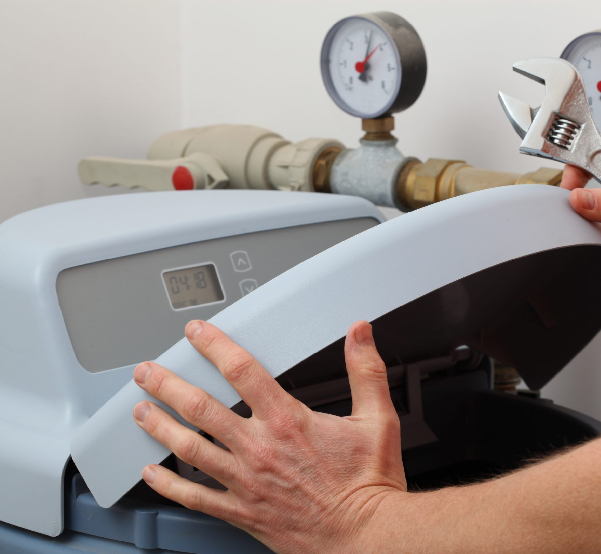
Water softeners are essential for enhancing water quality by eliminating minerals responsible for hardness. Before embarking on the installation journey, gaining an in-depth understanding of their mechanics and advantages is pivotal. Below, we look into every facet of water softeners to equip you with the knowledge necessary for informed decisions.
Hard water is characterized by elevated levels of minerals, predominantly calcium and magnesium, precipitating limescale deposits within plumbing fixtures and appliances, diminishing their efficiency and lifespan. Water softener installation requires precision connecting the unit to the main water supply and drain lines, ensuring proper function and longevity. Due to the technical intricacies involved, seeking the expertise of a professional plumber is advisable to guarantee seamless installation and mitigate potential complications.Top of Form
The Inner Workings of Water Softener
Leveraging ion exchange technology, water softeners facilitate the substitution of calcium and magnesium ions with sodium ions, thereby mitigating water hardness and thwarting the accumulation of limescale.
Exploring the Multifaceted Benefits
- Reduced Incidence of Limescale: By preventing mineral deposits in pipes, faucets, and appliances, water softeners enhance operational efficiency and extend the longevity of household fixtures.
- Enhanced Personal Care: Softened water results in softer skin and hair, cleaner, and brighter laundry and dishes.
- Prolonged Appliance Lifespan: Water softeners contribute to the prolonged functionality of water-dependent appliances like dishwashers, washing machines, and water heaters.
Pre-Installation Considerations
- Conducting Water Hardness Assessment: Prioritize testing your water’s hardness level to determine the appropriate water softener size and type tailored to your household’s requirements.
- Factoring in Usage Patterns: Consider household water consumption, family size, and available installation space to select a water softener that seamlessly integrates into your lifestyle.
A Closer Look at Water Softener Varieties
- Salt-Based Water Softeners: These systems utilize salt to regenerate resin beads, effectively purging hardness minerals from the water supply.
- Salt-Free Water Softeners: Alternatively known as descalers or conditioners, these systems prevent mineral buildup rather than remove minerals outright.
Navigating the Installation Process
- Integrating with the Water Supply: Water softener installation typically involves linking the unit to the primary water supply line and establishing a connection to a drain line for expelling wastewater.
- Seeking Professional Expertise: Given the technical nuances involved, enlisting the services of a certified plumber ensures seamless installation, minimizing the likelihood of complications.
Sustaining Performance Through Maintenance
- Regular upkeep, encompassing tasks such as replenishing salt in salt-based systems and periodic filter cleaning or replacement, is indispensable for preserving water softener efficacy.
- Proactive Monitoring: Regularly monitor salt levels and initiate regeneration cycles as warranted to avert hardness breakthroughs and maintain optimal water softening capacity.
When selecting a water softener system for your home, consider factors such as water hardness level, household water usage, and available space for installation. Assessing the size and type of system needed based on these considerations ensures that it effectively meets your household’s needs and provides optimal water-softening performance.
Integrating a water softener into your household infrastructure promises a transformative enhancement in water quality, safeguarding plumbing systems and appliances from the perils of hardness. By assimilating the intricacies of their functionality, conducting thorough pre-installation assessments, and adhering to meticulous maintenance protocols, you can harness the full spectrum of benefits associated with softened water for years to come.

